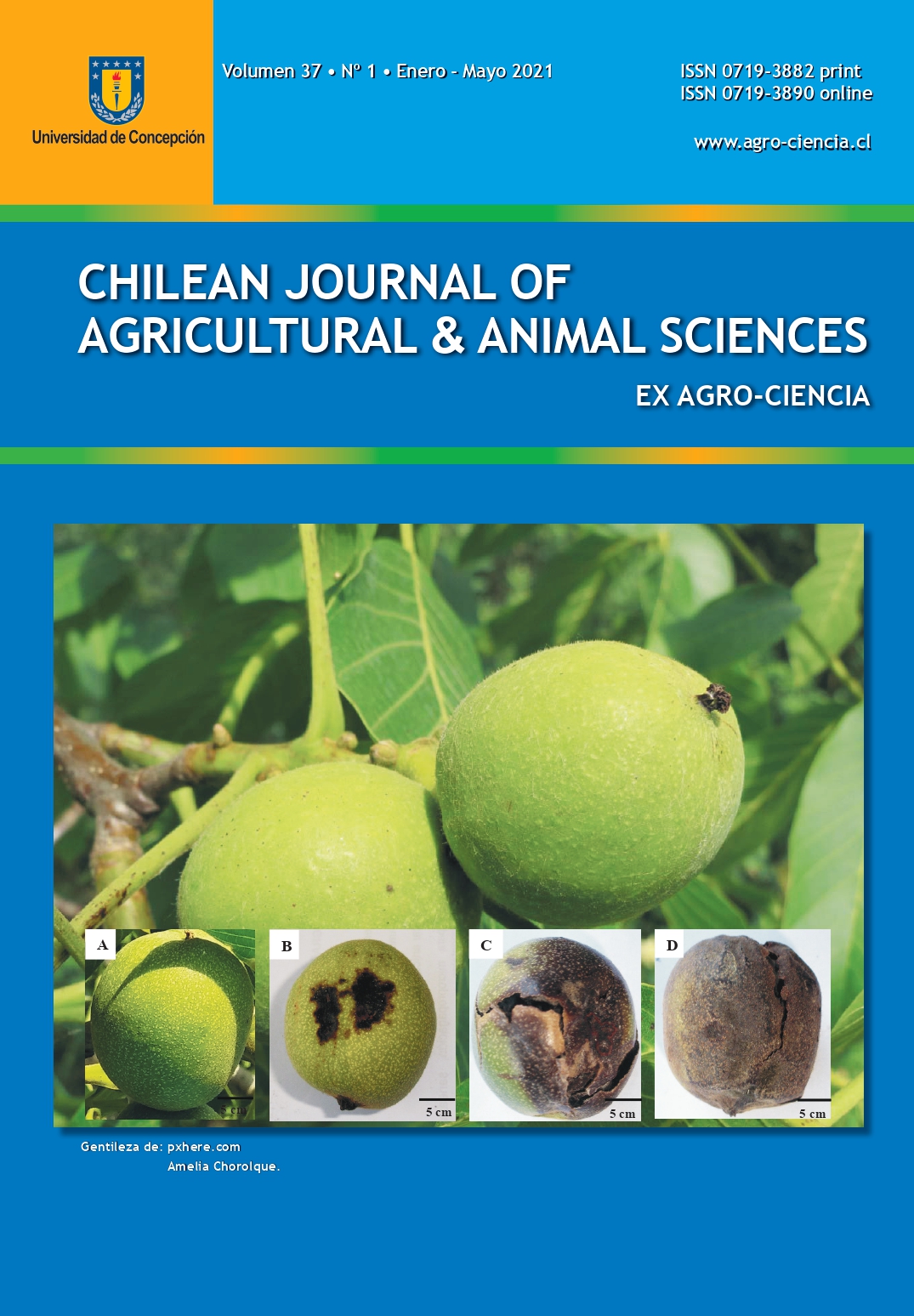SMALL HIVE BEETLE (Aethina tumida Murray), A POTENTIAL THREAT TO BEEKEEPING IN CHILE
Palabras clave:
small hive beatle, Aethina tumida, plague, honey bees, Apis mellifera, control, parasiteResumen
In recent years, beekeeping has been affected by many factors, including pesticides, monoculture
and deforestation as well as pests and diseases, which are causing the death of Apis mellifera and
other pollinating species. One of the most recent threats is a parasitic beetle of bee colonies, native
to sub-Saharan Africa, called small hive beetle (Aethina tumida Murray). It was first detected in
the USA in 1996, and it has continued to expand across the American continent. In 2015, it was first
discovered in Brazil, being the nearest country to Chile where it has been reported to date. The aim
of this work was to carry out a literature review on small hive beetle (SHB) as it can be a potential
threat to honey bee colonies in Chile. Adults of Aethina tumida feed on bee eggs while the larvae
consume brood, pollen and honey, causing great damage to bee colonies. In addition, they defecate
in honey, where a yeast present in their faeces, Kodamaea ohmerique, causes pollen and honey to
ferment. Due to the damage it causes and its rapid advance through different continents, its biology
and behaviour are being increasingly studied to explore control techniques and risk factors.
Descargas
Publicado
Cómo citar
Número
Sección

Esta obra está bajo una licencia internacional Creative Commons Atribución 4.0.







